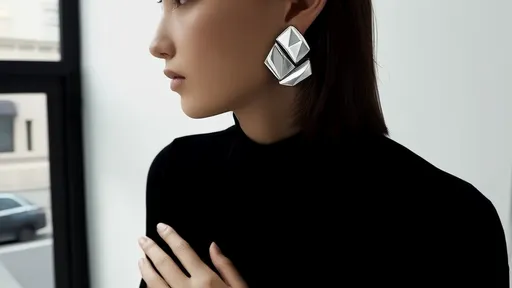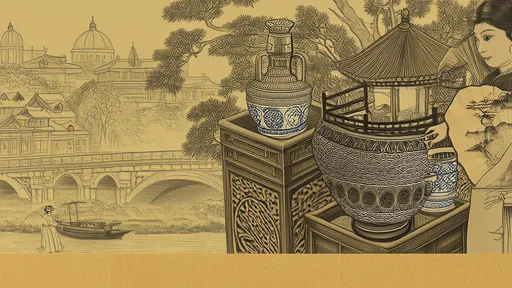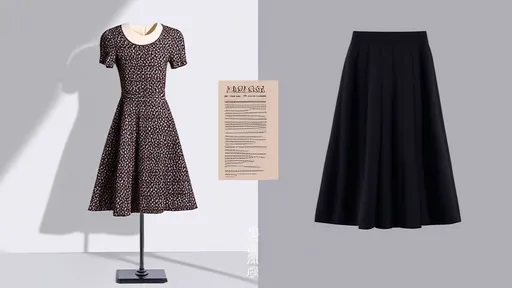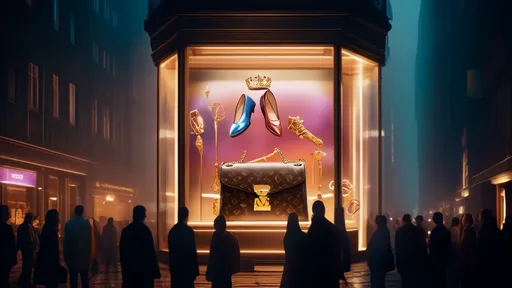In the global marketplace, international brands have long sought to tap into China's vast consumer base by incorporating Chinese cultural elements into their products and marketing campaigns. However, these efforts often fall into what scholars call the "Orientalism trap"—a superficial, exoticized interpretation of Chinese culture that reflects Western fantasies rather than authentic traditions. From luxury fashion houses to fast-food chains, many brands have stumbled in their attempts to resonate with Chinese audiences, revealing a deep-seated misunderstanding of the culture they aim to celebrate.
The allure of Chinese motifs—dragons, phoenixes, cherry blossoms, and the color red—has proven irresistible to Western designers. Yet, their application frequently lacks cultural nuance, reducing millennia of rich heritage into mere decorative tropes. A recent controversy erupted when a European fashion label released a qipao-inspired collection adorned with misplaced symbols, prompting backlash from Chinese netizens who accused the brand of cultural appropriation. The garments, though visually striking, bore little resemblance to the historical significance of the qipao, a garment deeply tied to China's Republican era and feminist movements.
This pattern of misrepresentation extends beyond clothing. Cosmetic companies have faced criticism for packaging products in porcelain-inspired containers featuring clumsily rendered calligraphy, while watchmakers have inaccurately reproduced zodiac animals in ways that distort their symbolic meanings. Even food brands have misfired, as seen in a now-infamous lunar New Year advertisement that conflated Chinese and Japanese cultural elements, sparking accusations of tone-deafness. These blunders highlight a troubling trend: the conflation of pan-Asian aesthetics with specifically Chinese traditions, resulting in a diluted, often incorrect portrayal.
What drives this persistent misreading of Chinese culture? Industry analysts point to several factors, including the lingering influence of 19th-century Orientalist art, which portrayed the East through a lens of mystery and otherness. Many Western creative directors, raised on these romanticized depictions, unconsciously replicate them in modern branding. Additionally, tight production schedules and a lack of meaningful consultation with cultural experts contribute to shallow interpretations. As one Shanghai-based branding consultant noted, "There's a difference between cultural appreciation and cultural tourism—too many brands are just sightseeing."
The financial stakes of these missteps are considerable. China's luxury market, projected to account for 40% of global sales by 2030, increasingly favors brands that demonstrate genuine cultural understanding. Younger Chinese consumers, in particular, are quick to call out perceived insincerity on social media platforms like Weibo and Xiaohongshu. A survey by China Market Research Group found that 68% of respondents aged 18-35 prefer brands that collaborate with local artisans over those that impose foreign interpretations of Chinese culture.
Some companies are beginning to course-correct. Rather than simply slapping Chinese iconography onto existing products, forward-thinking brands are investing in long-term partnerships with Chinese cultural institutions and designers. A British jewelry house recently earned praise for its three-year collaboration with a Suzhou embroidery master to create a capsule collection that authentically merged Eastern craftsmanship with Western design principles. Similarly, a French skincare line worked with historians to accurately reproduce Song Dynasty ceramic techniques for limited-edition packaging.
These successful examples share a common thread: they treat Chinese culture as a living, evolving tradition rather than a static museum exhibit. They recognize that contemporary Chinese consumers navigate multiple identities—honoring ancestral customs while embracing global modernity. As the CEO of a Shanghai-based branding agency observed, "The new generation doesn't want dragons on everything; they want to see how their heritage can speak to today's world." This nuanced approach represents the future of cross-cultural branding—one that moves beyond Orientalist clichés to forge authentic connections.
The path forward requires humility and sustained engagement. International brands must acknowledge that no amount of market research can substitute for deep cultural immersion. This means establishing creative teams in China, not just sales offices; consulting historians alongside trend forecasters; and recognizing that cultural symbols carry weight beyond their visual appeal. As China's cultural confidence grows alongside its economic might, the era of superficial Orientalist branding is coming to an end. The brands that thrive will be those that approach Chinese elements not as exotic flourishes, but as part of an ongoing dialogue between tradition and innovation.

By /Aug 13, 2025

By /Aug 13, 2025

By /Aug 13, 2025

By /Aug 13, 2025

By /Aug 13, 2025

By /Aug 13, 2025

By /Aug 13, 2025

By /Aug 13, 2025

By /Aug 13, 2025

By /Aug 13, 2025

By /Aug 13, 2025

By /Aug 13, 2025

By /Aug 13, 2025

By /Aug 13, 2025

By /Aug 13, 2025

By /Aug 13, 2025

By /Aug 13, 2025

By /Aug 13, 2025

By /Aug 13, 2025

By /Aug 13, 2025